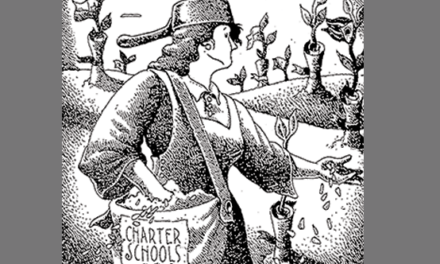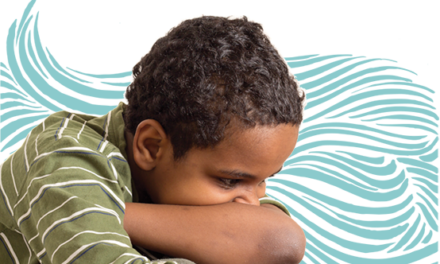Schools seeking to improve should make sure their extracurricular programming is incorporated into their strategic plan, not left on the sidelines.
Educators did not need a global pandemic to recognize the importance of extracurricular activities or to become aware of the challenges of maintaining them; however, the pandemic has given them a fresh awareness of the value of the connections students feel to their school and their classmates when participating in these activities. Decades of research have noted the positive association between extracurricular participation and desirable academic, social, and developmental outcomes (Broh, 2002; Camp, 1990; Lipscomb, 2007). Yet, schools hoping to boost these outcomes through extracurricular programs must contend with uneven participation, competition from youth sports programs outside school, and budgetary considerations (Bradley, 2020; Jayanthi et al., 2013).
Given the immense challenges that will face public education after the pandemic, schools may see no option but to cut back on nonacademic programming. But these challenges also present opportunities. The pandemic has required students, parents, and educators alike to reconsider what they value most in education, and that includes reconsidering the goals of extracurricular activities (ECAs). Indeed, research has suggested that ECA participation can be a crucial part of schools’ efforts to reestablish normalcy after the pandemic, foster social connectedness, and maximize academic achievement (Zaccoletti et al., 2020). Instead of standing by and watching passively as their schools dismantle their ECAs — whether due to budget cuts or because policy makers have prioritized efforts to make up for months of academic learning loss — it is time for educators to insist that these programs are not “extras” at all; they comprise an essential and integral part of the K-12 curriculum.
Social, cultural, and academic benefits
As students return to brick-and-mortar settings after months of limited in-person contact, especially with their peers, they must be welcomed back into an environment that is inclusive, supportive, and collegial. Educators should recognize that extended lockdowns have had significant effects on many children’s mental health, and they should make it a priority to tend to their emotional well-being (Fegert et al., 2020; Jones, 2020; Lee, 2020). ECAs are exceptionally well-positioned to ease this transition, helping children see school as a place of safety and belonging.
Further, participation in ECAs tends to have important developmental and academic benefits (Broh, 2002; Mahoney, Harris, & Eccles, 2006; Marsh & Kleitman, 2002), largely thanks to the social interactions they allow students to have with both peers and adults. The adults who lead these activities often serve as important role models — many of them had positive experiences with these activities themselves and want to provide their own students with similar experiences (Quiroz, 2000; Shulruf, 2010). Moreover, ECA sponsors often work with the same students over a span of years, allowing them to build trusting relationships with them (Anderson et al., 2004; Eldridge et al., 2014) and, over time, to help them develop the skills and dispositions needed for academic, social, and vocational success (McCabe et al., 2020; Roth & Brooks-Gunn, 2016).
Such relationships tend to be particularly valuable when academic faculty choose to sponsor activities, giving them chances to connect with students outside their subject-area classes (Miles & Ferris, 2015; Quiroz, 2000). For instance, imagine a high school biology teacher who coaches soccer in the fall and basketball in the winter, as well as serving as the chess club sponsor. This single adult will get to know, and perhaps serve as a mentor to, a large and diverse cross-section of the student body.
Research suggests also that teachers who serve in a variety of roles tend to feel more integral to the larger school community (McDonald, 2013), which can improve their sense of efficacy, morale, relationships with parents, and long-term retention. Ideally, then, school leaders should encourage a wide range of teachers — representing various subject areas, kinds of expertise, and years of experience — to sponsor activities, perhaps even offering them financial incentives for sponsoring or coaching more than one activity.
Persistent challenges
Even before the COVID-19 pandemic, many U.S. schools were dealing with budget constraints, declining enrollments, and shortages of teachers and coaches (Bell et al., 2018; Shaffer, 2019). Further, even at schools that were able to offer an array of popular extracurricular activities, not all students could take advantage of them. Decades of research have shown that participation in school ECAs by marginalized students tends to be associated with increased academic achievement (Melnick, Sabo, & Vanfossen, 1992; Neely & Vaquera, 2017; Spreitzer & Snyder, 1976); however, participation rates have been, and continue to be, unequal. Not every child can stay on campus after the bell rings — for instance, many are expected to care for family members after school or to earn money and contribute to the family income (Coulangeon, 2018; White & Gager, 2007).
Recent changes in the culture of youth activities have created some challenges as well. Privately operated (and often highly selective) clubs and teams have become increasingly popular, and growing numbers of young people have chosen to devote themselves to a single out-of-school activity or sport (anything from computer coding to baseball, soccer, dance, and gymnastics), starting early in their academic careers (Bell et al., 2018). Participating in such programs tends to require students to spend more time practicing, competing, and traveling to events than they would for a school-sponsored activity. In turn, this leaves them with little time to participate in other ECAs and experience their benefits, including connections to peers, teachers, and the school’s culture and values (DiSanti et al., 2019).
This kind of specialization has created challenges especially in rural areas, where relatively few schools have the funding and staff capacity to provide a large selection of activities (Showalter et al., 2017). Thus, when students opt out of a school-sponsored ECA in favor of a more specialized out-of-school opportunity, the rural school may be left without enough participants to merit offering the activity at all, and students who lack the money or time for an out-of-school program are left with even fewer options.
A new vision for extracurricular learning
In past decades, few schools took an intentional approach to designing and implementing their extracurricular programs, or to capitalize on their potential to promote social-emotional learning, close opportunity gaps, and support academic achievement. But school leaders can and should give close attention to their ECAs, finding ways to provide greater numbers of students with opportunities to participate in a broader range of highly personalized, motivating, and fulfilling activities (Rose & Ogas, 2020).
Extracurricular participation can be a crucial part of schools’ efforts to reestablish normalcy after the pandemic, foster social connectedness, and maximize academic achievement.
As a start, they should conduct an evaluation of their existing ECA programming, asking whether its goals ought to be redefined, whether its offerings should be more inclusive and varied, and whether its staff recruitment, training, and oversight ought to be improved.
Define clear and coherent goals
Researchers have often found that the most effective school leaders tend to unite all members of the organization — from teachers to administrators, counselors, secretaries, custodians, and on and on — around a shared definition of the school’s mission and values, so that they understand how their individual efforts contribute to the whole (Hallinger & Heck, 2010; McCabe et al., 2020). But even effective leaders often overlook their ECAs, failing to see that they, too, can be integral to the school’s larger priorities.
To take advantage of the many benefits ECAs can offer, school leaders should start with a careful effort to review the goals of their existing programs and, if necessary, redefine them, articulating precisely how they connect to the school’s larger mission and organizational structure. For example, schools that prioritize noncognitive skills and emotional intelligence should consider adding ECAs that foster community and collaboration and focus less on competition. School leaders shouldn’t make these decisions on their own, though. Rather, they should look to a diverse team of stakeholders (representing a range of school roles, academic subject areas, and parts of the community) to help determine what kinds of ECAs will best meet students’ needs, how those activities can strengthen the school’s culture and climate, and how they can complement the rest of the curriculum.
School stakeholder teams might set goals for including a larger percentage of the student population in ECA offerings but link those participation goals to other school priorities to provide a rationale for boosting participation. That rationale would then inform how they monitor results. For example, schools seeking to increase ECA participation in hopes of improving student connectedness and attendance might want to track truancy or delinquency to see if their efforts are having an effect. In another school environment, academic stress or personal well-being of students might be a more imminent concern, so they would orient their efforts toward offering low-stress, low commitment opportunities and track their results using such metrics as climate surveys.
Emphasize inclusion and variety
In general, and given the strength of the evidence pointing to the benefits of participation in extracurriculars, schools should make it a priority to involve as many students in ECAs as possible (Feldman & Matjasko, 2005; Fredricks & Eccles, 2010; Neely & Vaquera, 2017). They should also encourage every student to participate in a variety of activities, giving them opportunities to broaden their interests, learn about many topics, and interact with a wide range of peers and adults. And while some might worry about students becoming too involved, or experiencing diminishing benefits as they join more activities, research suggests that more ECAs tend to be better, with diminishing returns appearing to pose a problem only for the most hyper-involved students, who try to participate in a large number of activities all at once (Busseri et al., 2006; Mahoney & Vest, 2012; Springer & Diffily, 2010).
Schools should also make sure their menu of activities allows all students to participate in some way, no matter their gender, language background, physical condition, intellectual capacities, or out-of-school responsibilities. For example, they can offer activities, such as intramural sports, that require less time and involve less intense competition than traditional offerings (Glover, 1999). Similarly, schools should offer activities on a schedule that meets students’ differing needs. For some students, activities offered immediately after school will be the best option, while others will need to limit their participation to activities offered during lunch or before school. Schools could even offer virtual activities, such as organized video gaming (Schwartz, 2018), letting students meet online when their schedules allow.
Schools (and their states, in some cases) may also need to rethink policies that prevent students from participating if they don’t meet minimum academic and behavior thresholds. Such policies often do more harm than good, blocking marginalized students, especially, from opportunities to interact with peers and become more connected to the school community (Slone, 2018; Suleiman & Kunnath, 2021). It may seem logical to make participation in ECAs contingent on grades because it gives students an incentive to prioritize their academic performance. However, grades can be an unreliable indicator of academic engagement, effort, and mastery (Brookhart et al., 2016; Guskey & Brookhart, 2019). Barring students from activities because of their grades won’t necessarily have a positive impact on their classroom performance, but it will exclude them from activities that tend to build character, self-esteem, confidence, and motivation, which often translate to academic success (Bradley & Conway, 2016).
Finally, when they consider expanding and broadening their ECA programming, many schools will no doubt run up against budgetary constraints. In some districts, parents are able to cover the costs, but this solution tends to leave out schools that serve students from middle- and low-income backgrounds. Often, then, the best option is to seek out local partners such as the YMCA, local theater guilds, and other community organizations (Dixon, 2018) that can provide free or low-cost activities (Wong, 2015). As a result, the school’s faculty might be less involved in ECAs, which means students will miss out on the benefits of interacting with their teachers outside of class. But such partnerships also have advantages, such as helping students become more connected to the local community and more knowledgeable about the activities they can pursue outside of school.
Staffing and professional development
When seeking to expand their ECA offerings, schools may need to turn to adults from the surrounding community to serve as sponsors, coaches, staff, and program directors. However, these outsiders may not be familiar with the school’s mission or understand how the ECAs have been designed to complement the rest of the curriculum. Thus, schools need to be careful to recruit people whose skills and expertise fit the program’s goals, as well as to educate them about the school and its priorities and train them in the kinds of instruction, coaching, and supervision that the school values.
For example, imagine that a school practices standards-based grading. In this approach, students have multiple opportunities to demonstrate their mastery of a given standard, and they often choose to be assessed after school. ECA sponsors should know about the grading system, recognize that students often have valid reasons for missing an activity, and refrain from penalizing them for the absence.
When it comes to meeting students’ needs in the post-pandemic era, extracurriculars must be considered anything but “extra.”
At the same time, school leaders should also make sure teachers and staff understand the principles and goals of the ECA program. For example, many coaches instruct their student athletes to eat and drink frequently to maintain their caloric intake and hydration during the school day. However, these recommendations may not comply with the school’s lunch schedule or its rules about eating and drinking outside of the cafeteria. If teachers and staff don’t know about the coaches’ expectations, they might assume students are simply flouting the rules. In short, teachers, staff, and ECA sponsors and coaches need to be on the same page, communicating with each other for the students’ benefit (Senge et al., 2000).
Collaboration between curricular and extracurricular leaders can go deeper than merely recognizing and supporting each other’s goals. Consider for example, the previous school that practices standards-based grading. This school might use proficiency scales to communicate progress not only in academic courses but also in student activities. Coaches, for example, could create such scales to more clearly articulate to student athletes how to move from junior varsity to varsity basketball, while the drama director could use them to better communicate how to get to a lead role in the next school play. Finding alignment in providing consistent and clear feedback toward a standard gives students consistency and communicates a clear message about expectations across both curricular and extracurricular programming.
A shared vision
When educators understand the important social, developmental, and mental health benefits of participation in extracurricular activities, they tend to be more than willing to support ECA programming and to devote their own time to sponsorship and coaching. And when all school stakeholders — parents, community leaders, board members, and others — agree on a shared vision of what they want ECAs to accomplish and how they contribute to the school’s overall success, they tend to be more than willing to invest in rich and varied extracurricular opportunities for all students.
Undoubtedly, the realities of post-pandemic life will require an all-hands-on-deck approach, as many schools will face budget crunches, lingering mental health effects among students and teachers, and learning loss among those who were disconnected from school. But as school leaders come together to address these challenges, they must not neglect the important roles ECAs can play. Such activities often make powerful contributions to students’ well-being, their sense of connection to the school community, and their engagement in academics, and they must be included in the list of priorities for K-12 education in the coming years. When it comes to meeting students’ needs in the post-pandemic era, extracurriculars must be considered anything but “extra.”
References
Anderson, A.R., Christenson, S.L., Sinclair, M.F., & Lehr, C.A. (2004). Check & connect: The importance of relationships for promoting engagement with school. Journal of School Psychology, 42 (2), 95-113.
Bell, D.R., Post, E.G., Trigsted, S.M., Schaefer, D.A., McGuine, T.A., Watson, A.M., & Brooks, M.A. (2018). Sport specialization characteristics between rural and suburban high school athletes. Orthopaedic Journal of Sports Medicine, 6 (1), 1-6.
Bradley, J.A. (2020). Advocacy for extracurricular activities by superintendents of Pennsylvania rural and small school districts. [Doctoral dissertation, Point Park University]. ProQuest Dissertations and Theses Global.
Bradley, J.L. & Conway, P.F. (2016). A dual step transfer model: Sport and non-sport extracurricular activities and the enhancement of academic achievement. British Educational Research Journal, 42 (4), 703-728.
Broh, B.A. (2002). Linking extracurricular programming to academic achievement: Who benefits and why? Sociology of Education, 75 (1), 69-95.
Brookhart, S.M., Guskey, T.R., Bowers, A.J., McMillan, J.H., Smith, J.K., Smith, L.F., Stevens, M.T., & Welsh, M.E. (2016). A century of grading research: Meaning and value in the most common educational measure. Review of Educational Research, 86 (4), 803-848.
Busseri, M.A., Rose-Krasnor, L., Willoughby, T., & Chalmers, H. (2006). A longitudinal examination of breadth and intensity of youth activity involvement and successful development. Developmental Psychology, 42 (6), 1313-1326.
Camp, W.G. (1990). Participation in student activities and achievement: A covariance structural analysis. Journal of Educational Research, 83 (5), 272-278.
Coulangeon, P. (2018). The impact of participation in extracurricular activities on school achievement of French middle school students: Human capital and cultural capital revisited. Social Forces, 97 (1), 55-90.
DiSanti, J.S., Post, E.G., Bell, D., Schaefer, D., Brooks, M.A., McGuine, T.A., & Erickson, K.T. (2019). Exploring coach perceptions of youth sport specialization: A comparison of the high school and club sport contexts. Orthopaedic Journal of Sports Medicine, 54 (10), 1055-1060.
Dixon, M. (2018). Envisioning sport programs for the other 75%: Recapturing a lost generation. Sport & Entertainment Review, 4 (1), 3-8.
Eldridge, J.A., Palmer, T.B., Gillis, K., Lloyd, R., Squires, W.G., Jr, & Murray, T.D. (2014). Comparison of academic and behavioral performance between athletes and non-athletes. International Journal of Exercise Science, 7 (1), 3-13.
Fegert, J.M., Vitiello, B., Plener, P.L., & Clemens, V. (2020). Challenges and burden of the coronavirus 2019 (COVID-19) pandemic for child and adolescent mental health: A narrative review to highlight clinical and research needs in the acute phase and the long return to normality. Child and Adolescent Psychiatry and Mental Health, 14 (20), 1-11.
Feldman, A.F. & Matjasko, J.L. (2005). The role of school-based extracurricular in adolescent development: A comprehensive review and future directions. Review of Educational Research, 75 (2), 159-210.
Fredricks, J.A. & Eccles, J.S. (2010). Breadth of extracurricular participation and adolescent adjustment among African-American and European-American youth. Journal of Research on Adolescence, 20 (2), 307-333.
Glover, C. (1999). Intramural sports: Intramural and non-competitive athletics can reach out to more students and be more cost-effective than interscholastic athletics. Schools in the Middle, 9 (2), 30-33.
Guskey, T.R. & Brookhart, S.M. (Eds.). (2019). What we know about grading: What works, what doesn’t, and what’s next. ASCD.
Hallinger, P. & Heck, R.H. (2010). Collaborative leadership and school improvement: Understanding the impact on school capacity and student learning. School Leadership and Management, 30 (2), 95-110.
Jayanthi, N., Pinkham, C., Dugas, L., Patrick, B., & Labella, C. (2013). Sports specialization in young athletes: Evidence-based recommendations. Sports Health, 5 (3), 251-257.
Jones, C. (2020, May 13). Student anxiety, depression increasing during school closures, survey finds. EdSource.
Lee, J. (2020). Mental health effects of school closures during COVID-19. Child & Adolescent Health, 4 (6), 421.
Lipscomb, S. (2007). Secondary school extracurricular involvement and academic achievement: A fixed effects approach. Economics of Education Review, 26 (4), 463-472.
Mahoney, J.L., Harris, A.L., & Eccles, J.S. (2006). Organized activity participation, positive youth development, and the over-scheduling hypothesis. Society for Research in Child Development: Social Policy Report, 20, 1-30.
Mahoney, J.L. & Vest, A.E. (2012). The over-scheduling hypothesis revisited: Intensity of organized activity participation during adolescence and young adult outcomes. Journal of Research of Adolescence, 100 (2), 130-134.
Marsh, H. & Kleitman, S. (2002). Extracurricular school activities: The good, the bad, and the nonlinear. Harvard Educational Review, 72 (4), 464-514.
McCabe, J., Dupéré, V., Dion, E., Thouin, E., Archambault, I., Dufour, S., Denault, A.-S., Leventhal, T., & Crosnoe, R. (2020). Why do extracurricular activities prevent dropout more effectively in some high schools than in others? A mixed-method examination of organizational dynamics. Applied Developmental Science, 24 (4), 323-338.
McDonald, T. (2013). What are teachers’ perceptions of the professional benefits of extracurricular participation? [Unpublished doctoral dissertation]. Hofstra University, Hempstead, NY.
Melnick, M.J., Sabo, D.F., & Vanfossen, B. (1992). Educational effects of interscholastic athletic participation on African-American and Hispanic youth. Adolescence, 27 (106), 295-308.
Miles, K.H. & Ferris, K. (2015). Designing schools that work: Organizing resources strategically for student success. Education Resource Strategies.
Neely, S.R. & Vaquera, E. (2017). Making it count: Breadth and intensity of extracurricular engagement and high school dropout. Sociological Perspectives, 60 (6), 1039-1062.
Quiroz, P. (2000). A comparison of the organizational and cultural contexts of extracurricular participation and sponsorship in two high schools. Educational Studies, 31, 249-275.
Rose, T. & Ogas, O. (2020). Dark horse: Achieving success through the pursuit of fulfillment. Harper One.
Roth, J.L. & Brooks-Gunn, J. (2016). Evaluating youth development programs: Progress and promise. Applied Developmental Science, 20 (3), 188-202.
Schwartz, S. (2018, May 24). Gamers are the new high school athletes: The rise of esports. Education Week.
Senge, P., Cambron-McCabe, N., Lucas, T., Smith, B., Dutton, J., & Kleiner, A. (2000). Schools that learn: A fifth discipline fieldbook for educators, parents, and everyone who cares about education. Doubleday.
Shaffer, M.L. (2019). Impacting student motivation: Reasons for not eliminating extracurricular activities. Journal of Physical Education Recreation & Dance, 90 (7), 8-14.
Showalter, D., Klein, R., Johnson, J., & Hartman, S. (2017). Why rural matters 2015-2016: Understanding the changing landscape. Rural School and Community Trust.
Shulruf, B. (2010). Do extra-curricular activities in schools improve educational outcomes? A critical review and meta-analysis of the literature. International Review of Education, 56 (5/6), 591-612.
Slone, M.J. (2018). Supporting students: The role of high school athletics. [Doctoral dissertation, Alliant International University]. ProQuest Dissertations and Theses Global.
Spreitzer, E. & Snyder, E.E. (1976). Socialization into sport: An exploratory path analysis. Research Quarterly, 47 (2), 238-245.
Springer, K. & Diffily, D. (2010). The relationship between intensity and breadth of 37 after-school program participation and academic achievement: Evidence from a short-term longitudinal study. Journal of Community Psychology, 40 (7), 785-789.
Suleiman, M. & Kunnath, J. (2021). Examining inequities in grading practices to empower the disadvantaged learner. In T. Huber & J.G. O’Meara (Eds.), Education around the globe: Creating opportunities and transforming lives (pp. 29-68). Information Age Publishing.
White, A.M. & Gager, C.T. (2007). Idle hands and empty pockets? Youth involvement in extracurricular activities, social capital, and economic status. Youth & Society, 39 (1), 75-111.
Wong, A. (2015, January 30). The activity gap: Access to after-school programs is growing more unequal, and that’s pushing disadvantaged kids further behind. The Atlantic.
Zaccoletti, S., Camacho, A., Correia, N., Aguiar, C., Mason, L., Alves, R. A., & Daniel, J.R. (2020). Parents’ perceptions of student academic motivation during the COVID-19 lockdown: A cross-country comparison. Frontiers in Psychology, 11, 592670.
ABOUT THE AUTHOR

Chad Lang
CHAD LANG is the director of school improvement and human resources for Glenwood Community School District in Glenwood, IA.










